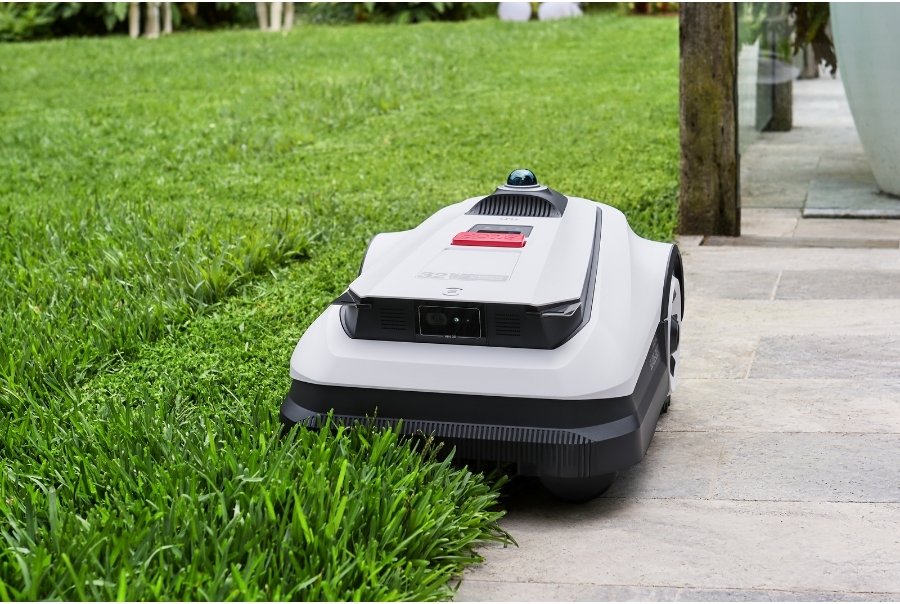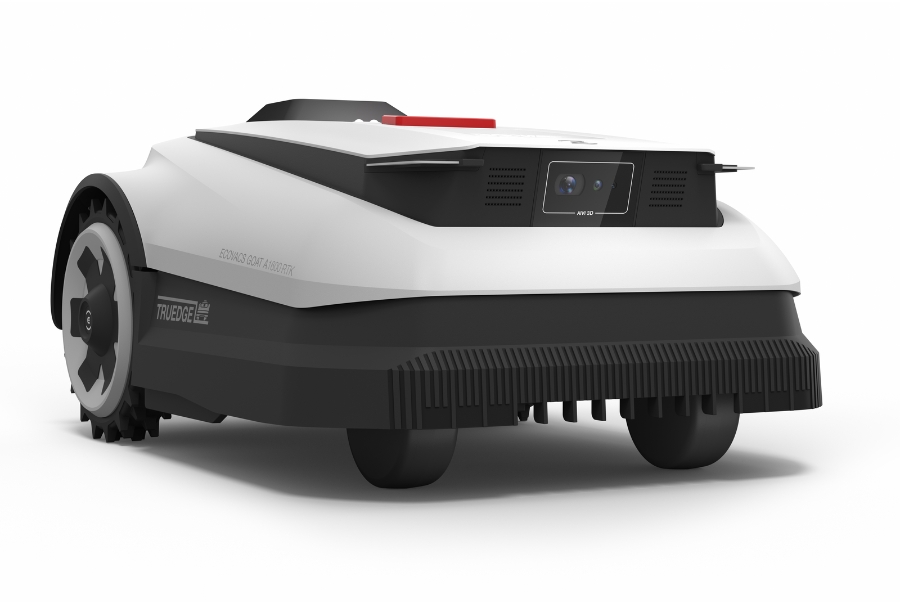Can Robot Lawn Mowers Cut Grass Along the Edges?
2025-06-19

What’s your priority when renting or buying a home? For 79% of Americans, having a lawn is high on the list. As robot lawn mowers get popular, one common concern remains: uncut grass along the borders. Cutting edges can be tricky when our yards are framed with stones, concrete, or creative items like recycled logs and woven branches. Raised edges, hard surfaces, uneven terrain, and dense vegetation can block the mower’s path or even cause damage. So, can robot lawn mowers really handle edge cutting?
Can Robot Lawn Mowers Cut Grass Along the Edges?
Yes, robot lawn mowers can cut close to the edges. High-end models with offset blades or edge-cutting technology give better coverage and can even ride along passable borders for a cleaner finish. Other models can manage close cuts, but may struggle near walls or flowerbeds due to their blade position and built-in safety margins.
The most common challenges when cutting grass along the edges include:
Blade Positioning
Most robot mowers use centrally mounted blades to stay balanced and safe; however, this limits how close they can cut to edges. The distance between the blade and the outer edge of the mower creates a gap, often leaving “greens creep”, i.e., a strip of uncut grass, along borders that require manual trimming.
Safety Gaps
To prevent collisions, robot mowers maintain a safety gap between the blade and nearby objects. On newer models like the GOAT A2500 RTK, this distance can be minimized to just 1.97 inches. For others, the gap is determined by how the boundary wire is installed, which often causes the mower to stop short of fences or walls.
Obstacles
Robot mowers like GOAT robot lawn mowers are equipped with obstacle avoidance sensors, which can be an issue when navigating uneven borders or areas with dense vegetation, rocks, or decorations. These are usually identified as hazards, causing the mower to steer away. Raised edges or loose stones can also block the wheels.
Lack of Edge Mode
Not all mowers include a dedicated edge-cutting mode that finds the boundary by distinguishing grass from surrounding surfaces like sand or flowerbeds. Without this feature, the machine may push past the boundary, if it’s passable, or get stuck and repeatedly bump into walls or barriers.
Design of Lawn Borders
Lawns bordered with scattered rocks or rough-hewn stones can make the edge difficult to find. If the device is unable to go over these surfaces, it may miss trimming the grass near the edge, leaving behind uneven or uncut sections.
How to Choose a Robot Mower for Edge Cutting?
If edge cutting matters to you, it’s worth looking for a robot mower with the right hardware and software, including smart blade design, edge-cutting technology, and reliable navigation. A compact design helps with tight corners, while slope-climbing ability accommodates uneven terrain. These features work together to cut closer to borders and save you from follow-up trimming.

Here are the key features to look for:
Blade System
In contrast to a centrally-located design, offset blades can cut nearer to the edges of the lawn. The GOAT A2500 RTK’s industry-leading gap-free dual blade system further boosts a 33% faster rotating speed1, pushing 3 times the mowing efficiency 2 of the previous generation and achieving an impressive cutting speed of 2.3 feet per second.
Edge Cutting Technologies
Look for edge mode, such as GOAT’s TruEdge Consistent Edge Mowing, that delivers precise cut-to-edge trimming. Powered by 3D-ToF and AI cameras, it accurately detects the boundary and maximizes blade-to-edge coverage. Alternatively, it rides on passable borders with zero-edge cutting.
Smart Navigation & Obstacle Detection
Advanced Mowers with LiDAR, AI cameras, or GPS mapping can better detect edges and work around objects like logs. For example, the pioneering Dual-LiDAR Navigation System in GOAT A2500 RTK builds a highly precise 3D depth map, while the AIVI 3D Obstacle Avoidance promptly identifies and avoids over 200 types of obstacles, optimizing the coverage.
Customizable Boundary Settings
Whether your mower uses boundary wires or virtual boundaries through an app, it should let you fine-tune the cutting area. Boundary wires create a magnetic field that the device's sensors detect to stay within the set zone. Newer models like GOAT use LiDAR and Real Time Kinematics (RTK) for mapping, allowing you to customize settings like no-go zones directly in the app.
Compact Design
Compared to traditional models like ride-on mowers, smart mowers with a slim design can easily reach tighter spots and pass through narrow passages between landscape features. If your garden has curved edges or decorative elements that limit space around the borders, check the dimensions and make sure your smart device can handle it.
All-Terrain Mobility
In many US cities like Pittsburgh and Cincinnati, yards are not perfectly flat. In this case, look for the slope climbing ability of a mower, particularly the all-terrain wheels and strong motors, and make sure it can climb up the slope near the borders.
Base Station Placement
For models using RTK navigation, where you place the base station affects how the mower navigates the borders. The base station sends a strong and stable signal to guide the device along the edges; placing it behind walls or too far from the other end of the lawn may impact its accuracy.
2 Best GOAT Robot Lawn Mowers for Edge Cutting
GOAT A2500 RTK

Powered by LiDAR-Enhanced RTK Navigation, the GOAT A2500 RTK receives up to 45 satellites in 80% more signal bands, resulting in precise positioning down to 0.8 inch, 4 times the connection speed, and a 130% boosted stability while mowing3. Its TruEdge system supports cut-to-edge trimming on passable borders, and unpassable ones with a 1.97-inch blade-to-edge distance. AIVI 3D Obstacle Avoidance keeps it safe when cutting close to objects like rocks and fences. With intelligent U-shaped path planning, this robot lawn mower adapts to your garden’s layout and keeps borders neat.
Shop GOAT A2500 RTK NowGOAT O1000 RTK

With its compact design, the GOAT O1000 RTK can trim narrow borders as tight as 2.3 feet4 and maneuver sharp corners. It uses 3D-ToF and AI cameras through TruEdge technology for precise edge cutting, while its LiDAR-Enhanced RTK Navigation (LELS) boosts positioning accuracy to 0.8 inch and optimises the U-shaped mowing path to ensure 100% coverage5. For edges that are located on slopes, it can conquer inclines up to 24°. The wire-free setup makes mapping quick and simple, so you can relax while reviewing the boundary settings through the ECOVACS HOME app.
Shop GOAT O1000 RTK NowFAQ
Can robot mowers mow in the rain?
Yes, robot mowers with waterproof designs can operate in light rain, including GOAT mowers with IPX6 waterproof protection. That said, mowing wet grass can affect cutting quality and leave clumps behind. Some models have rain sensors that automatically pause operation when rain is detected.
How often should you cut grass with a robot?
Robotic lawn mowers are made to be used frequently, like daily or a few times a week. Regular trimming keeps the grass healthy, encourages even growth, and reduces the amount of clippings left behind compared to infrequent mowing.
Do I need boundary wires for a robotic mower?
Many robotic mowers still require you to install boundary wires to define the mowing area. Advanced models like GOAT robot mowers, instead, use LiDAR and RTK navigation to accurately measure the boundaries that can be adjusted through an app.
Disclaimer(s):
- 33% faster rotating speed: This refers exclusively compared to all previous GOAT models by ECOVACS, based on data from ECOVACS Laboratory. According to tests in the ECOVACS Lab environment, the GOAT A Family offers a rotating speed of 3000rpm, which is a 33% increase over the GOAT G1's 2250rpm. Actual results may vary depending on factors such as grass type, lawn size, terrain, and other environmental conditions.
- 3x mowing efficiency: This refers exclusively compared to all previous GOAT models by ECOVACS, based on data from ECOVACS Laboratories. According to tests in the ECOVACS Lab environment, the GOAT A Family is supported by the 32V platform, which is a 80% increase over the GOAT G1's 18V. Also, the actual mowing period has decreased to 1/3 to the GOAT G1's with an 18V platform under controlled conditions. Actual results may vary depending on factors such as grass type, lawn size, terrain, and other environmental conditions.
- 4x connection speed, a stability boost of up to 130%: This refers to the experimental result operated by ECOVACS Laboratory, that ECOVACS LELS navigation system presents a 4-times speed of connecting/recovering the RTK communication and 30% more stability of RTK connection among the competitive robotic mowers, chosen by ECOVACS Laboratory.
- 2.3 feet: This refers to the experimental result operated by ECOVACS Laboratory, that ECOVACS GOAT O Family is able to go through the path as narrow as 0.7m. Actual results may vary depending on factors such as grass type, lawn size, terrain, and other environmental conditions.
- 100% coverage: This refers to the full coverage of the claimed lawn area by ECOVACS GOAT, measured by ECOVACS Laboratory. For detailed area information, please kindly find it in product spec. Actual results may vary depending on factors such as grass type, terrain, and other environmental conditions.






